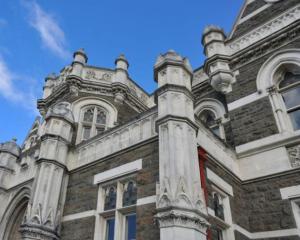Another aurora could be on the way as a solar tsunami blasts from the Sun towards Earth's atmosphere.
Overnight, New Zealanders across the country were treated to a spectacular show of aurora activity with vivid colourful skies after material spat out of a huge spot on the sun and into Earth's magnetic field.
Otago University physics professor Craig Rodger said central and lower South Island regions were likely to see aurora activity again overnight but people in the upper North Island, like Auckland, were less likely to see it with the naked eye.
The US Space Weather Prediction Centre (SWPC) showed this patch of activity was set to fade by midnight, but another flare explosion on the Sun has hurled a solar tsunami towards Earth, he said.
The SWPC forecast that burst of activity to arrive late Monday afternoon to early evening.
"So more auroral activity is possible tomorrow too. Once again, not Auckland aurora though."
Some places where people missed out on seeing the Southern Lights on Saturday night may have a better chance of seeing them on Sunday evening - but Aucklanders may still be left in the dark.

The South Island was looking cloudier than Saturday night with the exception of Buller and south of Oamaru, she said.
The North Island will have mostly clear skies on Sunday evening.
Stunning views of the Aurora Australis brought people flocking to southern beaches to get a glimpse of the rare and spectacular phenomenon last night.
Traffic was heavy around St Clair and St Kilda beaches as sightseers thronged the area and coastline taking photos.
ODT readers have been sending in their snaps of the lights dancing in the sky from locations across the South.
"I cannot wipe this smile off my face, such an amazing thing to see," said Makayla Evans, of Cromwell.
James Hustler managed to take a spectacular time-lapse video of the Aurora during his landing at Christchurch Airport from Melbourne.
Astronomer Ian Griffin, from Tūhura Otago Museum, said New Zealand had been the first to get a front row seat.
"What's happening is material from the sun is crossing space and interacting with Earth's magnetic field and generating electric currents all over the place, that's potentially doing things like interfering with the power grid and also causing amazing aurora, obviously for folks like myself who like watching the aurora, it's a very exciting time."
The US National Oceanic and Atmospheric Administration said the powerful solar storm was likely to continue the rest of the weekend.
It said the storm might pose risks to navigation systems, power grids, and satellite navigation, among other services.
On Saturday, New Zealand national grid operator Transpower shut down some power circuits as a precaution.
The national grid emergency notice for some areas of the country has been extended until 8pm, but Transpower said there had been no problems so far.
A spokesperson said there had been no power cuts and the circuits would be reinstated once it was safe to do so.
Exciting rather than scary
An expert helping prepare New Zealand for the impacts of solar storms says Earth is in the middle of a pretty seriously big geomagnetic storm right now, but he stresses it is not an extreme event.
Material fired out from a sun spot, is crashing into the planet's atmosphere this weekend.
Transpower says it has put the electricity grid into a 'more' resilient state to protect equipment. It earlier issued a "grid emergency notice" though did not expect power supplies to be disrupted as a result of the storm.
The storm was one of the most severe to strike Earth in decades and the US Space Weather Prediction Centre forecast severe conditions from 6-9pm (NZ time) on Saturday.
There have been many aurora displays in the Northern Hemisphere on Saturday (NZ time).

Despite reaching G5 - the top of the NOAA SWPC scale for geomagnetic storms - Rodger said it has only just passed that threshold.
It was the largest such storm for more than a decade in New Zealand, he said, but not as big as those of 2003 or 2001.
And we had learned a lot since then, he said.
Rodger has been speaking with members of the electricity industry, who told him there were large but not concerning geomagnetically induced currents, particularly in hot spots such as Dunedin.
Peak currents have reached 60 amps; and magnetic field changes have peaked around 60-to-70 nanoteslas per minute (nT/min), he said.
That was much smaller than the big solar storm in November 2001 which knocked out a transformer in Dunedin, and magnetic field changes reached 200 nT/min.
Rodger has been working on understanding and modelling the impacts of a severe solar storm on New Zealand's electricity grid.
As part of that work he has been helping Transpower prepare for extreme events tens of times larger than the current geomagnetic storm.
Those extreme events were expected to induce thousands of amps of excess electrical current, and magnetic field changes of 4000-5000nT/min.
The coronal mass ejections were expected to keep striking Earth over the next 24 hours or so, with disturbed geomagnetic conditions peaking Saturday afternoon and lasting until at least the end of Sunday.




























